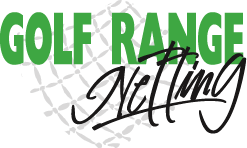Even a decade ago, we couldn’t have imagined drones in the hands of ordinary people. But now, Unmanned Aerial Vehicles (UAV) or drones are taking over almost every field from photography to surveillance.
However, access to this modern technology comes with responsibility. When you’re operating drones, you must consider safety, not just the device’s safety, as drones can cause property damage, injuries to people, and other aircraft difficulty. This is why understanding safety regulations is inevitable for drone operators, even if they’re operated for fun.
Netting is one of the most effective solutions individuals can use to operate drones safely. Let’s explore the importance of drone safety and how you ensure it with netting.
But before getting into the details, let’s learn more about drones.
Why Are Drones Used?
Drones are spectacular small devices that allow people to shoot videos and pictures from above. They’re safe, easy-to-operate devices with countless applications to make people’s lives easier.
The typical drones we know can be used in many events like concerts, festivals, and beach parties to photograph desired locations from above.
However, drones aren’t limited to photography, as many professionals use drones to reduce life risks. For example, power companies use drones to check power lines without risking workers’ lives. Roof companies also use drones to inspect roofs from a distance safely.
There are even public safety drones that are used to rescue people in times of natural disasters. Simply put, the possibilities of drone applications are endless.
Why Is Drone Safety Necessary?
Let’s talk about the potential risks of drones when they’re flown without safety measures. Drones can crash into buildings, trees, and other objects in their way. And colliding with objects can also damage the drone itself. Technical errors, pilot’s mistakes, weather conditions – many reasons can be behind such unwanted cases.
Here’s why you should consider flying drones with safety measures:
Protect the Public & Animals
Drone collisions, crashes, and falls can harm living beings by inflicting injuries and fatalities. Safety measures like netting can help you prevent such issues.
Protect Property & Surroundings
Drones can damage others and your property, like buildings, vehicles, trees, etc. You can keep your drone from harming valuable property and save yourself from costly repairs and lawsuits.
Prevent Legal Consequences
Drone regulations like FAA drone laws encourage pilots to follow proper drone flying guidelines and rules. Avoiding such restrictions can lead to fines and legal actions.
Protecting Privacy
Drones can enter someone’s privacy in many ways. This is why following privacy guidelines for drone flying is mandatory to protect others’ privacy and prevent legal consequences.
Reducing Environmental Impact
Drones, such as wildlife disturbances and noise pollution, can negatively impact the environment. Following drone operating regulations helps you mitigate the environmental effects.
Prevent Aircraft Accidents
Flying drones carelessly cause crashes with other aircraft. If it’s with human-crewed air vehicles, the damages could be catastrophic.
Reduce Costs
Drone crashes and accidents can raise your expenses. You might need to spend a lot on repairs, insurance premiums, and legal fees. So safe drone operation can be a prevention method to avoid such costs.
Use of Netting To Ensure Drone Safety
Drone pilots can use drone cage netting, flight cages, racing nets, or other customized netting to maximize drone safety. Here are a few ways described – to maximize drone safety with netting – for drone operators:
Use It for Safe Training: After you buy a drone, it can be tempting to use it as soon as you can. Before you jump straight into flying, you should learn how to operate the drone first. You might accidentally hurt people and property around you.
But netting helps you practice with your drone in a contained place. If you are a novice operator, you can use mesh to reduce the chances of safety hazards. Even if the drone gets caught inside a netting, it won’t be able to harm others or properties.
Securing Drone Competitions: Drone racing and other competitions seem fun but could be dangerous for people spectating the events. Drones sometimes fly differently than you want them to. And high-speed drones in those competitions can get out of control and injure people anytime. Like flight cages, drone netting can protect spectator venues so that drones cannot go off track and hurt people.
Easy Access To Fallen Drones: When you are new to this, operating drones can be troublesome. Flying drones can get out of control and crash in a place far away from you. Drones can crash into water or be lost in forests.
You might not even get the chance to recover and repair your precious device. Not to mention thousands of dollars goes into vain. But a netted area gives you a safe place for training, ensuring your drones never go beyond your reach.
Maximizing drone safety benefits drone operators in many ways. And netting allows you to safely handle drones while keeping them in front of your eyes. Need help with designing and installing netting structures? Contact Golf Range Netting – an industry-leading manufacturer and provider of unique, one-of-a-kind netting structures.
